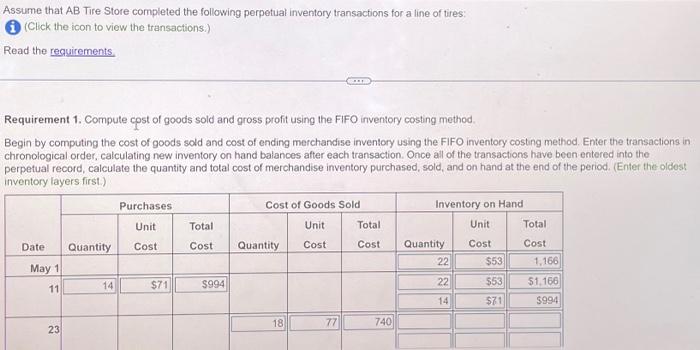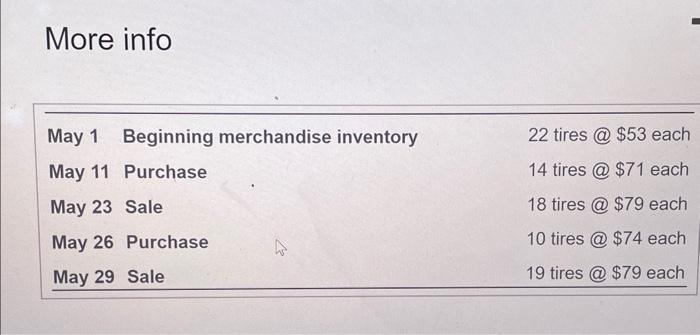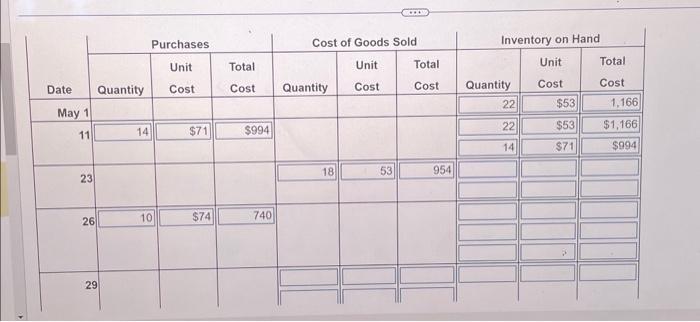Answered step by step
Verified Expert Solution
Question
1 Approved Answer
Assume that AB Tire Store completed the following perpetual inventory transactions for a line of tires: (Click the icon to view the transactions.) Read the
Assume that AB Tire Store completed the following perpetual inventory transactions for a line of tires: (Click the icon to view the transactions.) Read the requirements. Requirement 1. Compute cpst of goods sold and gross profit using the FIFO inventory costing method. Begin by computing the cost of goods sold and cost of ending merchandise inventory using the FIFO inventory costing method. Enter the transactions in chronological order, calculating new inventory on hand balances after each transaction. Once all of the transactions have been entered into the perpetual record, calculate the quantity and total cost of merchandise inventory purchased, sold, and on hand at the end of the period. (Enter the oldest inventory layers first.) Date May 1 11 23 Quantity 14 Purchases Unit Cost $71 Total Cost $994 Cost of Goods Sold Unit Quantity Cost 18 77 Total Cost 740 Inventory on Hand Unit Cost Quantity 22 22 14 $53 $53 $71 Total Cost 1,166 $1,166 $994



Step by Step Solution
There are 3 Steps involved in it
Step: 1

Get Instant Access to Expert-Tailored Solutions
See step-by-step solutions with expert insights and AI powered tools for academic success
Step: 2

Step: 3

Ace Your Homework with AI
Get the answers you need in no time with our AI-driven, step-by-step assistance
Get Started


